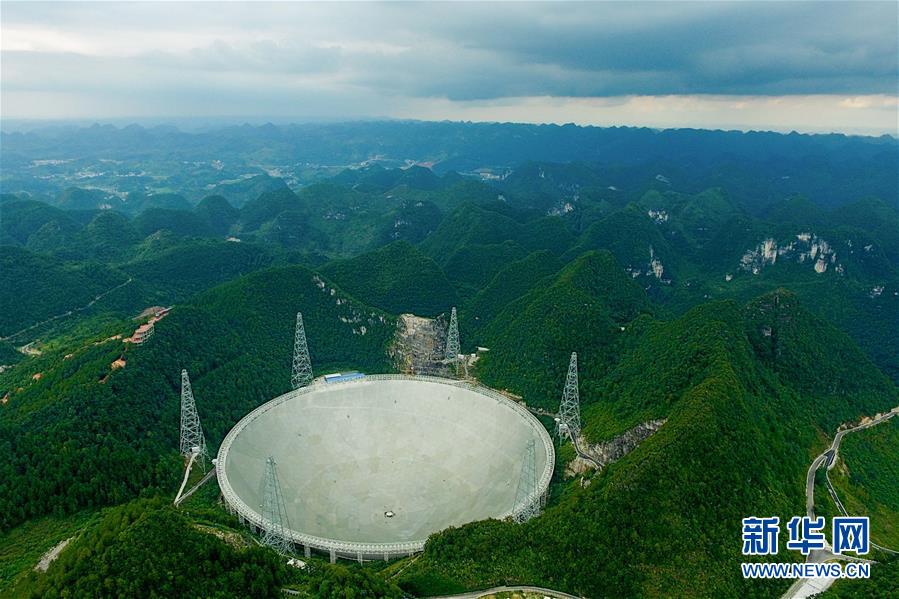
1. Click "System Restore" in the "System Protection" interface. Click Next in the pop-up system restore prompt window. Click to show more restore points, and you can also see the restore points automatically created by the system after the update.
2. Reinstall: Reinstall is to completely clear all data and files on the computer and then reinstall the operating system.All data should be backed up before reinstalling, because reinstalling will clear all data on the hard disk, including personal files, documents, photos, music, etc. It is suitable for problems and major failures of system software and hardware.
3. Step 1, turn on the computer, click the "Start" key, and click the "Settings" option. Step two, after the setting interface pops up, select the "Update and Security" option. Step three, after the new interface pops up, select the "Restore" option on the left. Click the "Start" option to restore this computer.
4. Search Create a restore point from the taskbar and select it from the list of search results. In the "System Protection" tab, select "Create". Enter the description of the restore point, and then select "Create" and "OK" in turn.
1. First of all, we turn on the power Enter the desktop, click the start icon on the left, and then enter the system information. After the search is completed, click the search results. Next, we can find the version of our current system on the system information interface.Then we go back to the start menu and click the setting option.
2. Enter [Recovery Options] 1 in the Windows search bar, and then click [Open] 2. In the project that went back to the previous version of Windows 10, click [Start] 3. If you don't have this project, you may have updated Windows for more than 10 days or you can't do it back due to other operations.
3. Open the "Control Panel". Find "Restore" in the panel and click to open. Click "Open System Restore" on the right to open it. There are two options here. The first is the restore point recommended by the system (that is, the system automatically restores to the state before normal), and the second is to choose a restore point by yourself.
4. [Answer]: WindoWs 10 has its own rollback function. Users only need to click the [Operation Center Icon] in the lower right corner of the Windows 10 desktop and enter [All Settings]. Then select [Update and Security] and [Restore] in turn, and finally click the [Start] button under [Back to Windows 7].
1, click the "Start" button in the lower left corner. 2 Click "Settings" - "Update and Security" - "Restore" - "Reset this computer" - "Start" in order.
2. Click the "Settings" button. Click the "Update and Security" button. Click "Restore" and then select "Reset This Computer".Click "Start". Choose the appropriate option according to your needs.
3. First of all, you can find the settings from the beginning. As shown in Figure 1, click the button at the arrow to open the settings in Figure 2. Keep scrolling down, find the last update button, and click Open. At this time, the interface generally stays on other pages. As shown in the figure below, you need to use recovery here. Find this item, open the page, and you can use the reset function.
4. Click the "Start" button 2 in the lower left corner and click "Settings", "Update and Security", "Restore", "Reset this computer", "Start". If you can't enter the system, you can also try to force the shutdown twice. When it is turned on for the third time, it will automatically enter the Windows RE repair environment 3 According to the individual.
100 free bonus casino no deposit GCash-APP, download it now, new users will receive a novice gift pack.
1. Click "System Restore" in the "System Protection" interface. Click Next in the pop-up system restore prompt window. Click to show more restore points, and you can also see the restore points automatically created by the system after the update.
2. Reinstall: Reinstall is to completely clear all data and files on the computer and then reinstall the operating system.All data should be backed up before reinstalling, because reinstalling will clear all data on the hard disk, including personal files, documents, photos, music, etc. It is suitable for problems and major failures of system software and hardware.
3. Step 1, turn on the computer, click the "Start" key, and click the "Settings" option. Step two, after the setting interface pops up, select the "Update and Security" option. Step three, after the new interface pops up, select the "Restore" option on the left. Click the "Start" option to restore this computer.
4. Search Create a restore point from the taskbar and select it from the list of search results. In the "System Protection" tab, select "Create". Enter the description of the restore point, and then select "Create" and "OK" in turn.
1. First of all, we turn on the power Enter the desktop, click the start icon on the left, and then enter the system information. After the search is completed, click the search results. Next, we can find the version of our current system on the system information interface.Then we go back to the start menu and click the setting option.
2. Enter [Recovery Options] 1 in the Windows search bar, and then click [Open] 2. In the project that went back to the previous version of Windows 10, click [Start] 3. If you don't have this project, you may have updated Windows for more than 10 days or you can't do it back due to other operations.
3. Open the "Control Panel". Find "Restore" in the panel and click to open. Click "Open System Restore" on the right to open it. There are two options here. The first is the restore point recommended by the system (that is, the system automatically restores to the state before normal), and the second is to choose a restore point by yourself.
4. [Answer]: WindoWs 10 has its own rollback function. Users only need to click the [Operation Center Icon] in the lower right corner of the Windows 10 desktop and enter [All Settings]. Then select [Update and Security] and [Restore] in turn, and finally click the [Start] button under [Back to Windows 7].
1, click the "Start" button in the lower left corner. 2 Click "Settings" - "Update and Security" - "Restore" - "Reset this computer" - "Start" in order.
2. Click the "Settings" button. Click the "Update and Security" button. Click "Restore" and then select "Reset This Computer".Click "Start". Choose the appropriate option according to your needs.
3. First of all, you can find the settings from the beginning. As shown in Figure 1, click the button at the arrow to open the settings in Figure 2. Keep scrolling down, find the last update button, and click Open. At this time, the interface generally stays on other pages. As shown in the figure below, you need to use recovery here. Find this item, open the page, and you can use the reset function.
4. Click the "Start" button 2 in the lower left corner and click "Settings", "Update and Security", "Restore", "Reset this computer", "Start". If you can't enter the system, you can also try to force the shutdown twice. When it is turned on for the third time, it will automatically enter the Windows RE repair environment 3 According to the individual.
 LR stock price Philippines
LR stock price Philippines
865.64MB
Check Walletinvestor digi plus
Walletinvestor digi plus
823.29MB
Check Champions League
Champions League
289.75MB
Check bingo plus update today Philippines
bingo plus update today Philippines
587.35MB
Check PAGCOR online casino free 100
PAGCOR online casino free 100
887.98MB
Check Hearthstone arena deck Builder
Hearthstone arena deck Builder
736.34MB
Check Walletinvestor digi plus
Walletinvestor digi plus
299.36MB
Check Hearthstone Wild Decks
Hearthstone Wild Decks
364.64MB
Check Free sports events uefa champions league app android
Free sports events uefa champions league app android
422.75MB
Check UEFA European championship
UEFA European championship
943.85MB
Check Hearthstone arena deck Builder
Hearthstone arena deck Builder
752.88MB
Check Hearthstone Arena win rate
Hearthstone Arena win rate
529.72MB
Check UEFA Champions League standings
UEFA Champions League standings
156.87MB
Check Champions League
Champions League
139.26MB
Check bingo plus update today
bingo plus update today
394.34MB
Check Europa League app
Europa League app
426.19MB
Check App to watch Champions League live free
App to watch Champions League live free
171.11MB
Check Arena plus APK
Arena plus APK
491.95MB
Check Bingo Plus
Bingo Plus
257.34MB
Check UEFA Champions League standings
UEFA Champions League standings
687.23MB
Check 100 free bonus casino no deposit GCash
100 free bonus casino no deposit GCash
518.36MB
Check Hearthstone Wild Decks
Hearthstone Wild Decks
551.16MB
Check Champions League
Champions League
545.56MB
Check UEFA Europa League
UEFA Europa League
461.86MB
Check Hearthstone deck
Hearthstone deck
788.34MB
Check Casino Plus app
Casino Plus app
741.75MB
Check Champions League
Champions League
995.54MB
Check Casino Plus app
Casino Plus app
996.27MB
Check DigiPlus stock
DigiPlus stock
176.46MB
Check Champions League
Champions League
675.17MB
Check Casino Plus
Casino Plus
582.41MB
Check Free sports events uefa champions league app android
Free sports events uefa champions league app android
261.41MB
Check Hearthstone Arena win rate
Hearthstone Arena win rate
878.92MB
Check Hearthstone Arena win rate
Hearthstone Arena win rate
527.72MB
Check Casino Plus GCash login
Casino Plus GCash login
696.14MB
Check Hearthstone Arena win rate
Hearthstone Arena win rate
394.93MB
Check
Scan to install
100 free bonus casino no deposit GCash to discover more
Netizen comments More
2637 DigiPlus stock
2025-02-06 04:13 recommend
1576 App to watch Champions League live free
2025-02-06 03:27 recommend
117 Hearthstone Arena Tier List
2025-02-06 03:13 recommend
1159 Casino Plus GCash login
2025-02-06 02:59 recommend
2137 UEFA Champions League live streaming free
2025-02-06 02:14 recommend